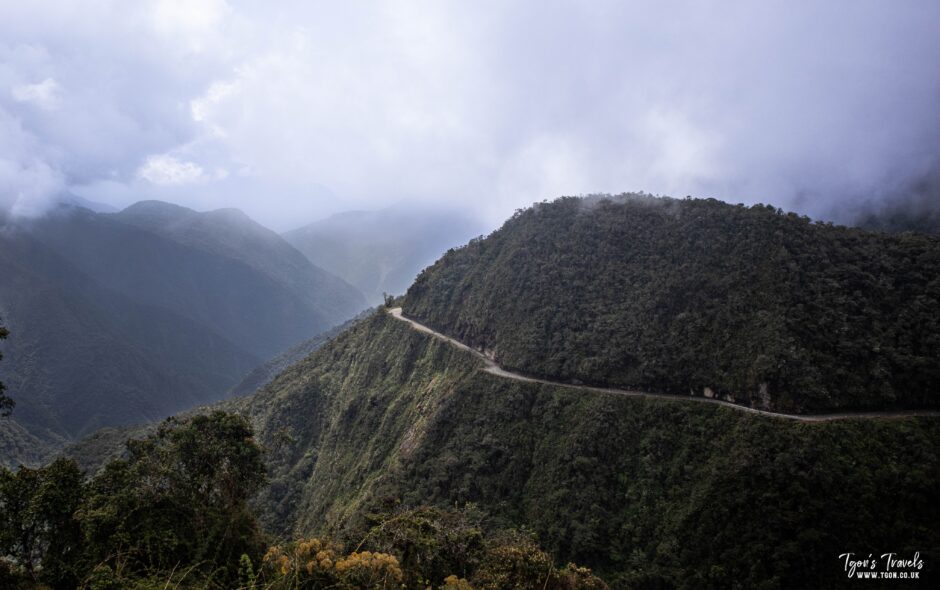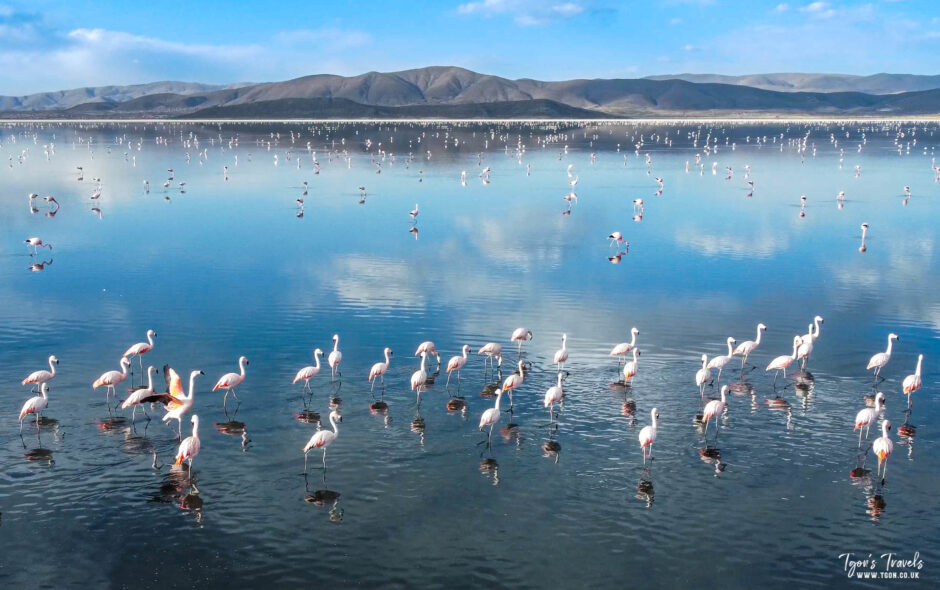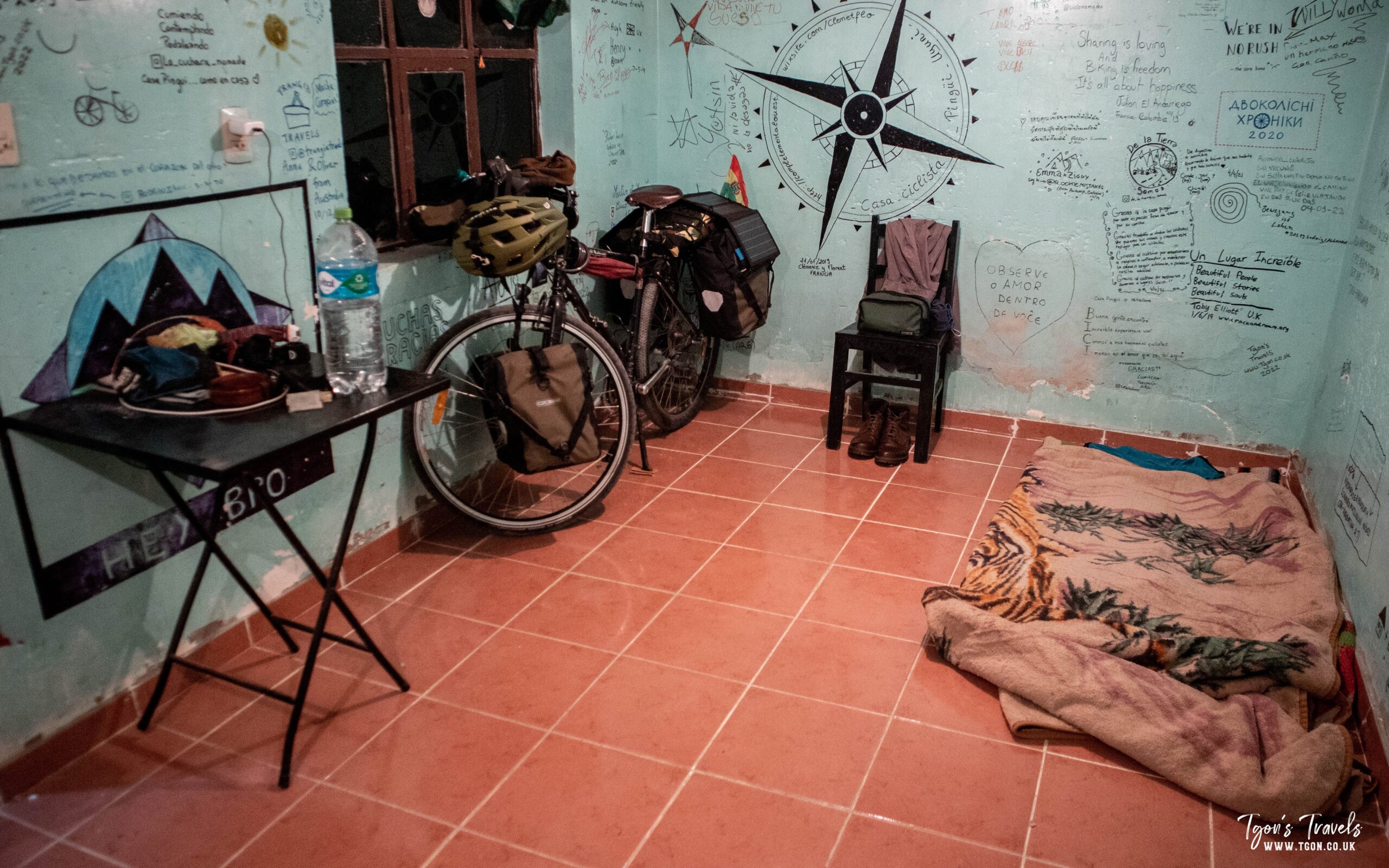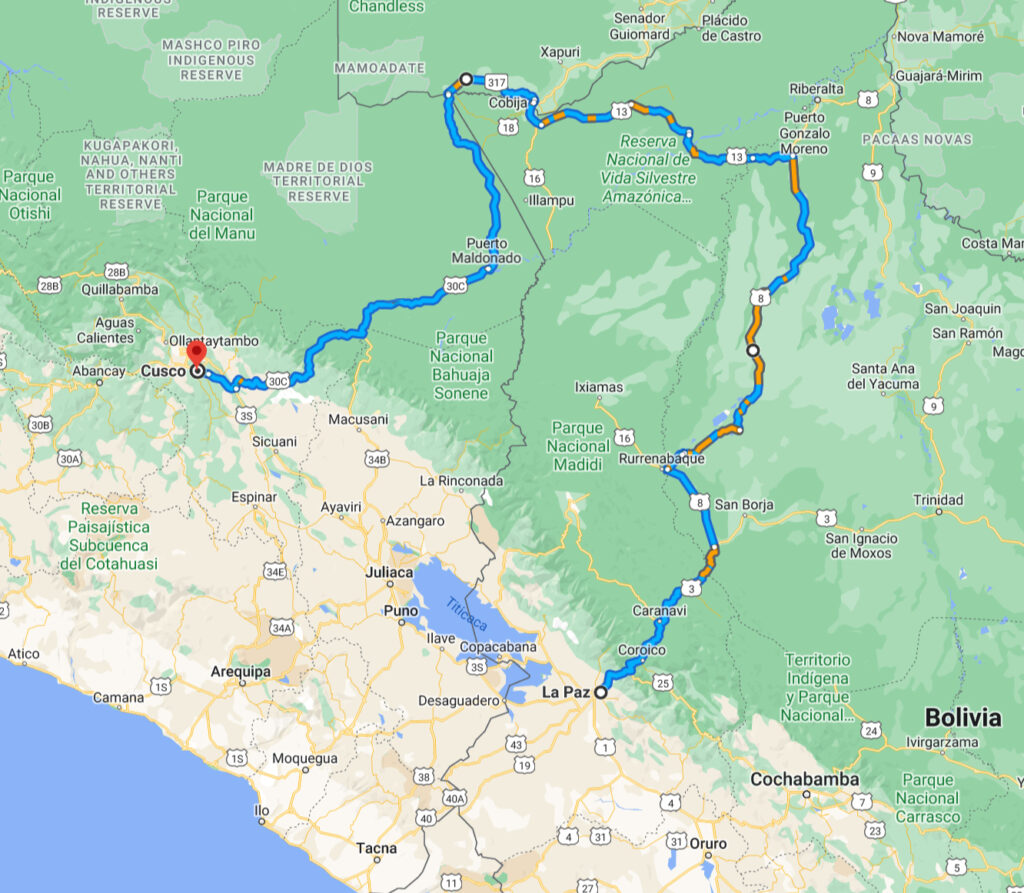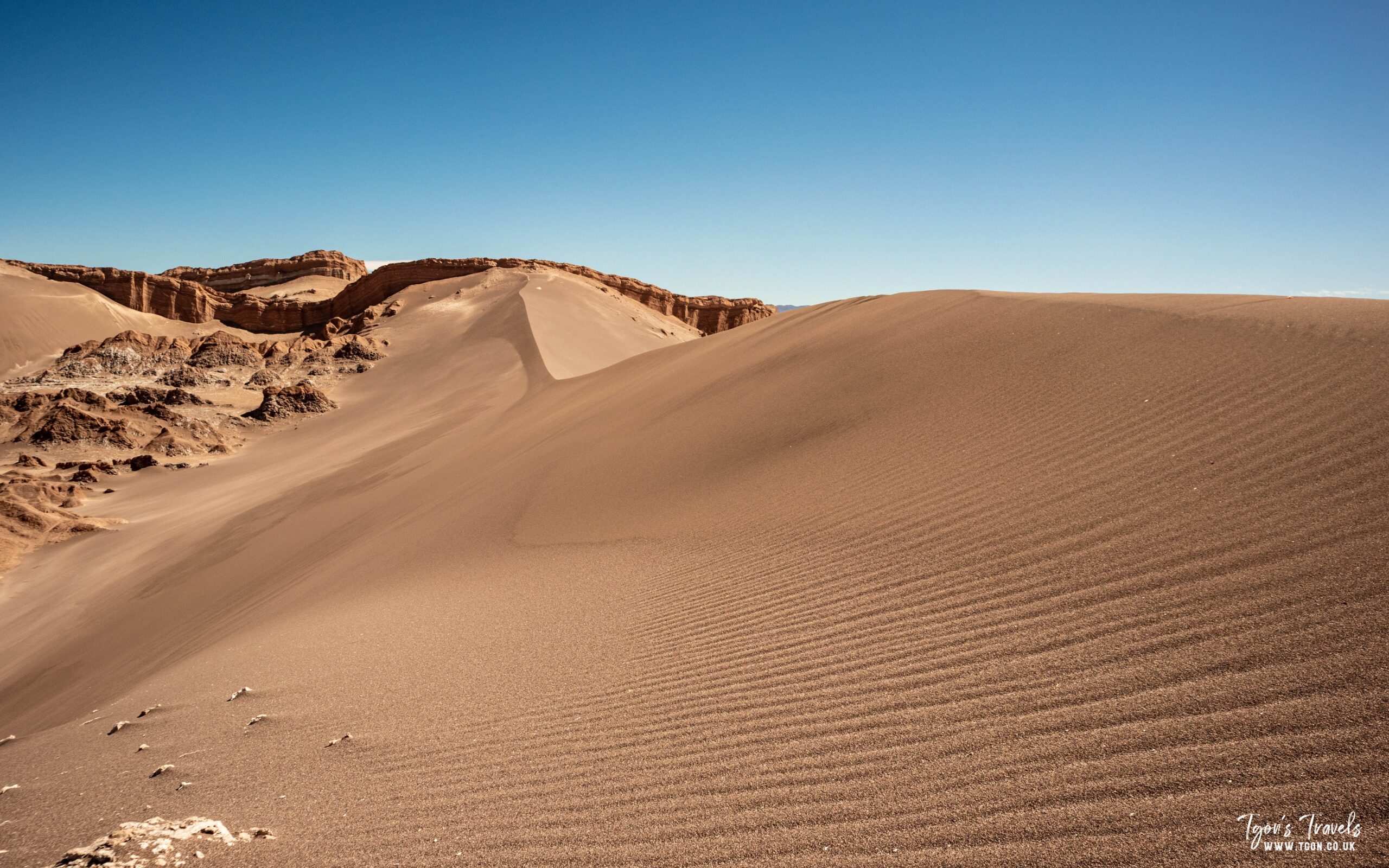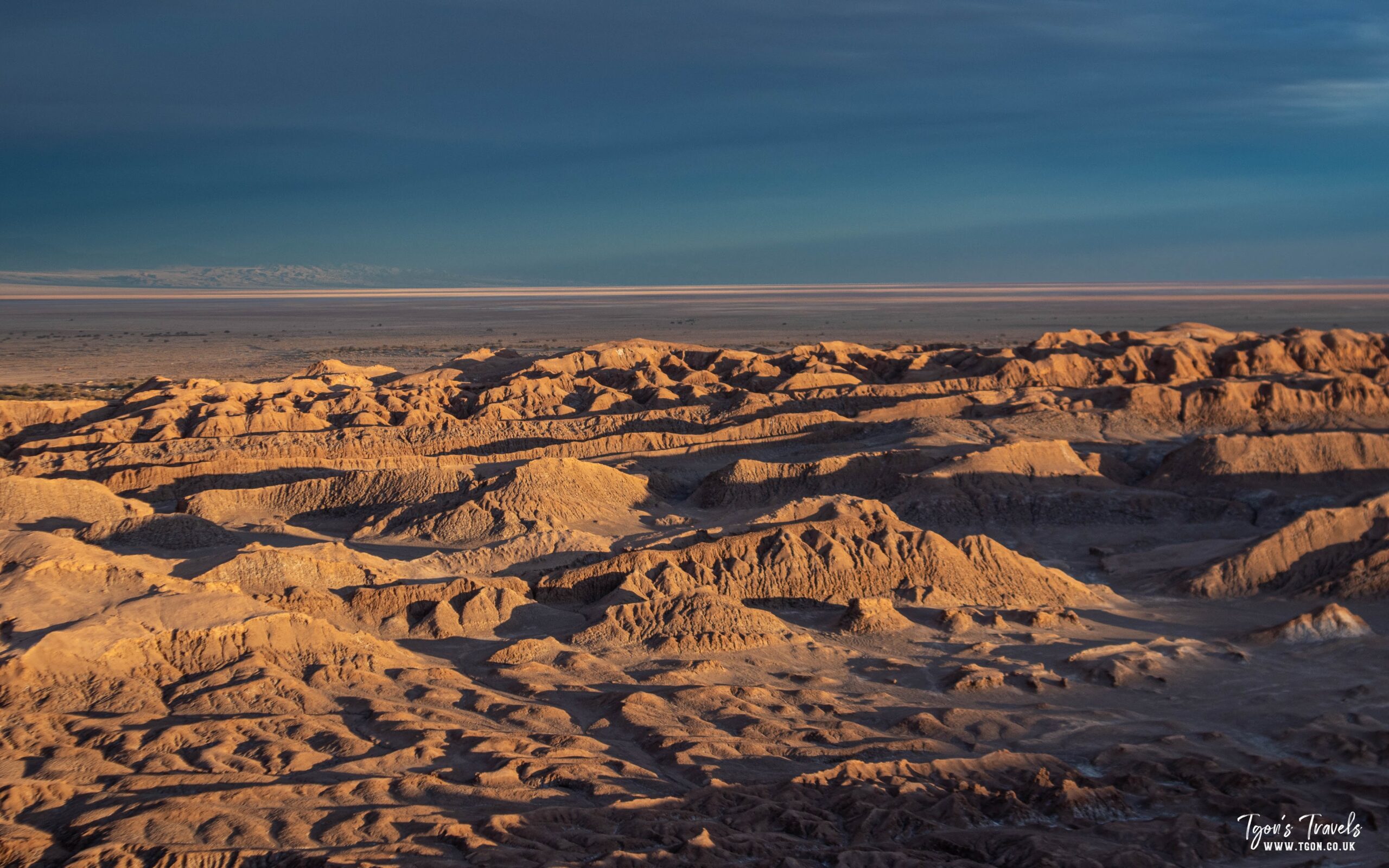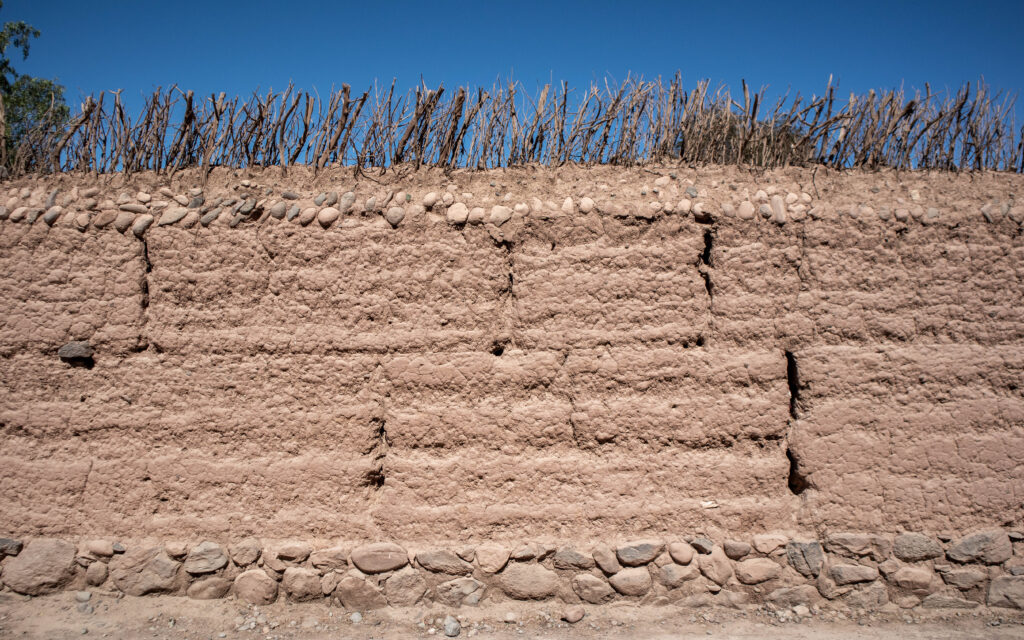I arrived in La Paz and took a few days to rest. I wanted to extend my visa, as it says 30 days. But the immigration office in La Paz told me that it is actually for 90 days because of my nationality. I am still not really convinced that it will go smoothly when I try to leave. Even if the visa is really 90 days, my passport stamp says 30, so a visa agent at the border could easily try to ask for a bribe. Hopefully this won’t happen though.
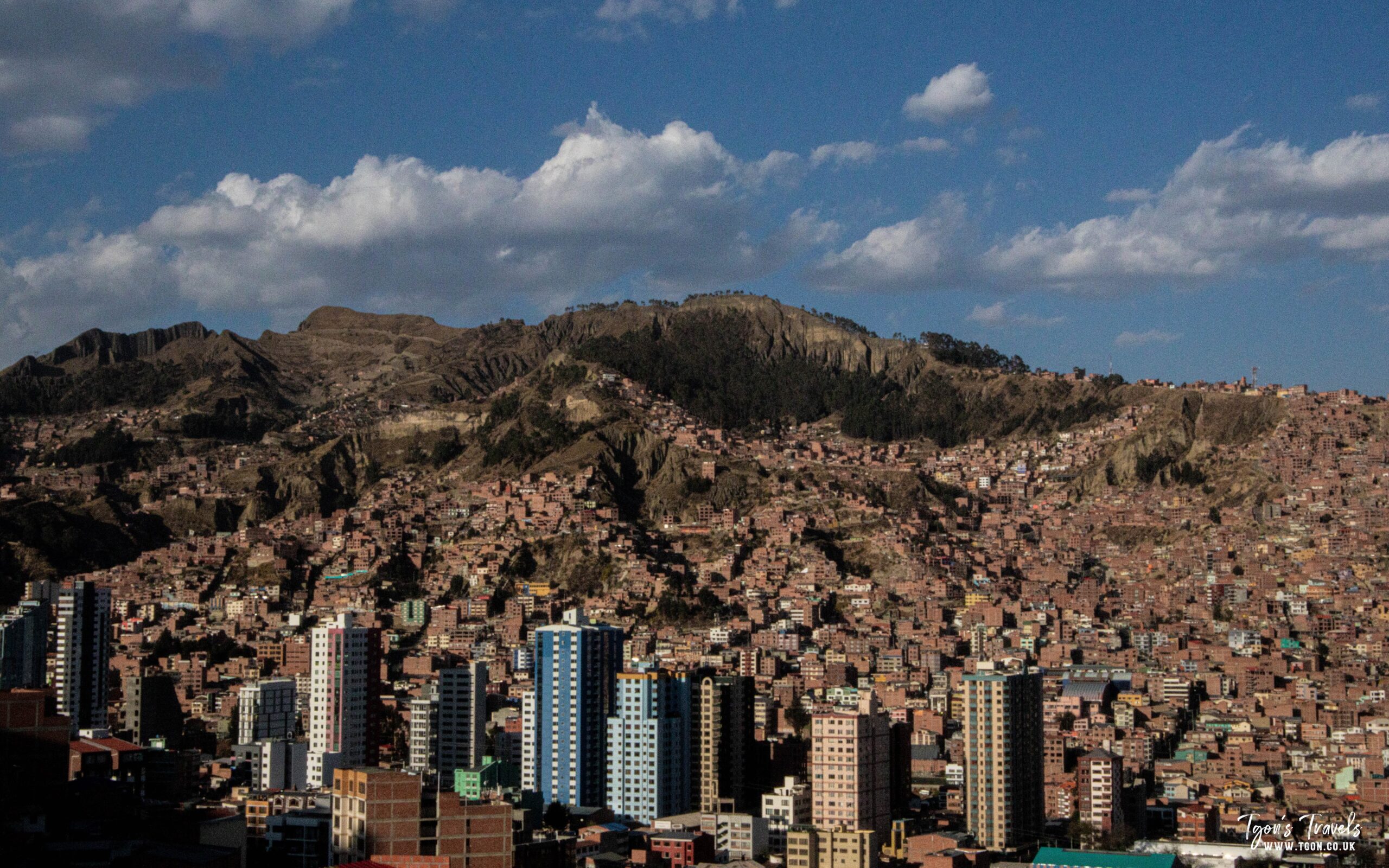
La Paz
La Paz isn’t the capital of Bolivia, even though most people think it is. But La Paz definitely feels like the capital. It’s a nice enough city in a beautiful valley surrounded by mountains. Because of this steep landscape, there are cable cars to take you to different areas of the city. There is a mixture of people wearing modern clothing and traditional clothing. As well as a ‘witch market’ to visit. The ‘witch market’ is a tourist area where they sell souvenirs but also have dried dead llamas hanging from the ceilings. It was nice to spend a few days in a big city, but it felt so strange after being out in the middle of nowhere for so long. I spent a few days relaxing in the city before heading off towards the ‘Death Road’.
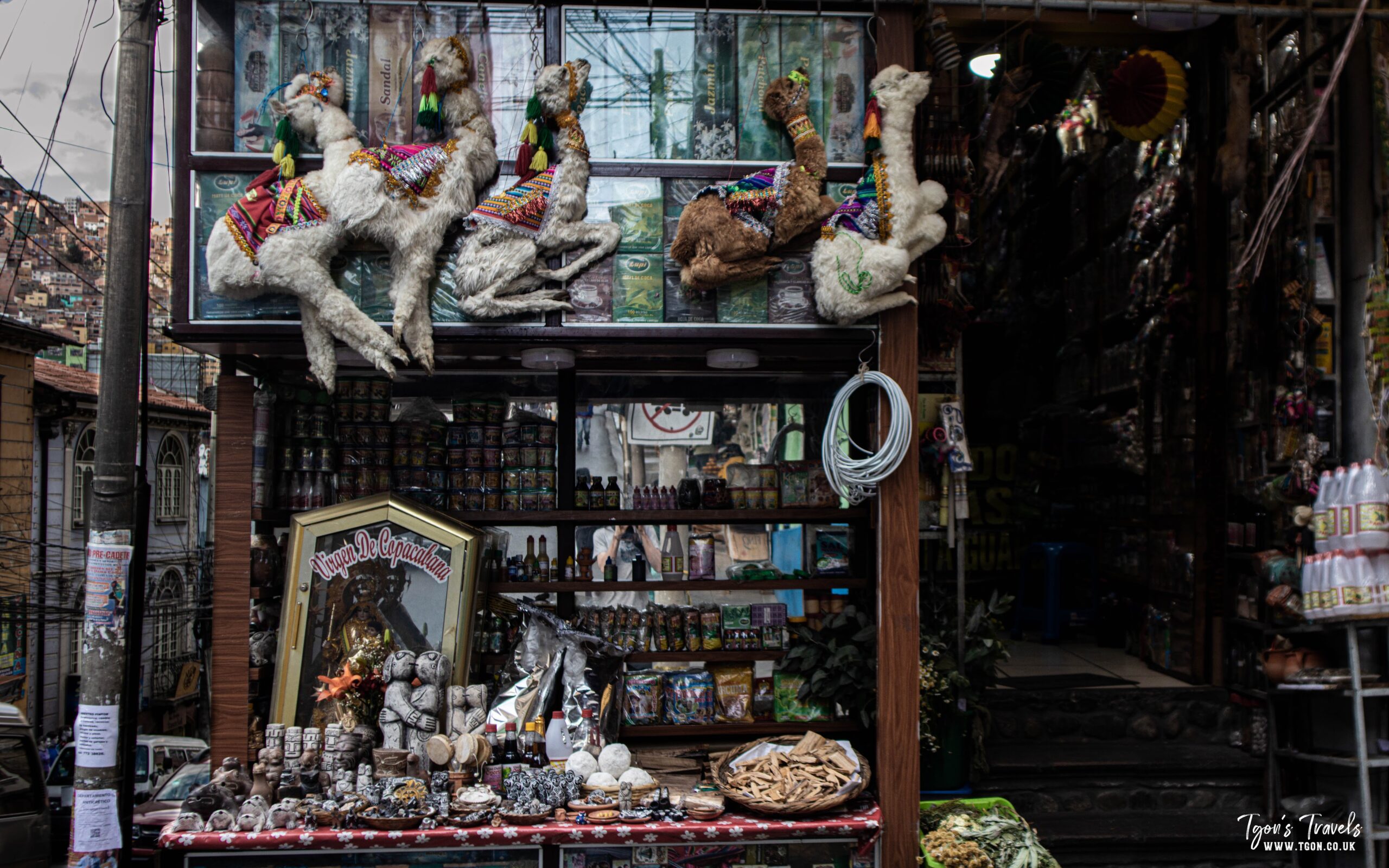
My hardest day so far
The route to the top of the death road was the hardest day that I have had so far. On the mapping app it looked ok. Only around 58km. I have done more than that already. So I thought it would be an easy enough day. But I made some mistakes which ended up making this the hardest and most dangerous day so far. Firstly, I left too late. I set off at around 11am and started cycling through the city streets. Unfortunately the app that I use was sending me on some strange and unnecessary streets. Turn left and go up a hill, then turn right to come down hill, then left again back up the same hill. Really stupid. Plus I could have taken one of the cable cars to cut a large section of the route. But I carried on and went out to the edge of town.
It was a long steep hill. Basically up one side of a mountain and down the other side of the mountain. It took me 7 hours to cycle and push my bike to the top. Several times I thought I should stop to rest, but then I thought about the altitude and thought it would be too cold. I convinced myself that it was better to get up and over the top. The longer I went, the more I had to keep going. As I got to the top of the mountain the clouds started to blow in. I put on some warm weather gear and kept going, thinking that the clouds would clear as I started to go down the other side. As I got to the top the sun was setting. So I started down the other side of the mountain through thick fog and dark conditions. I couldn’t see far in front of myself as I went down the winding mountain road. I knew it was dangerous but I kept going as slowly as I could, to stay as safe as possible. To make things even worse, my headlight came lose, so if I hit a bump in the road, the headlight would fall forward and point at the floor instead of where I needed to see. I kept going and followed my mapping app to get to the start of the death road.
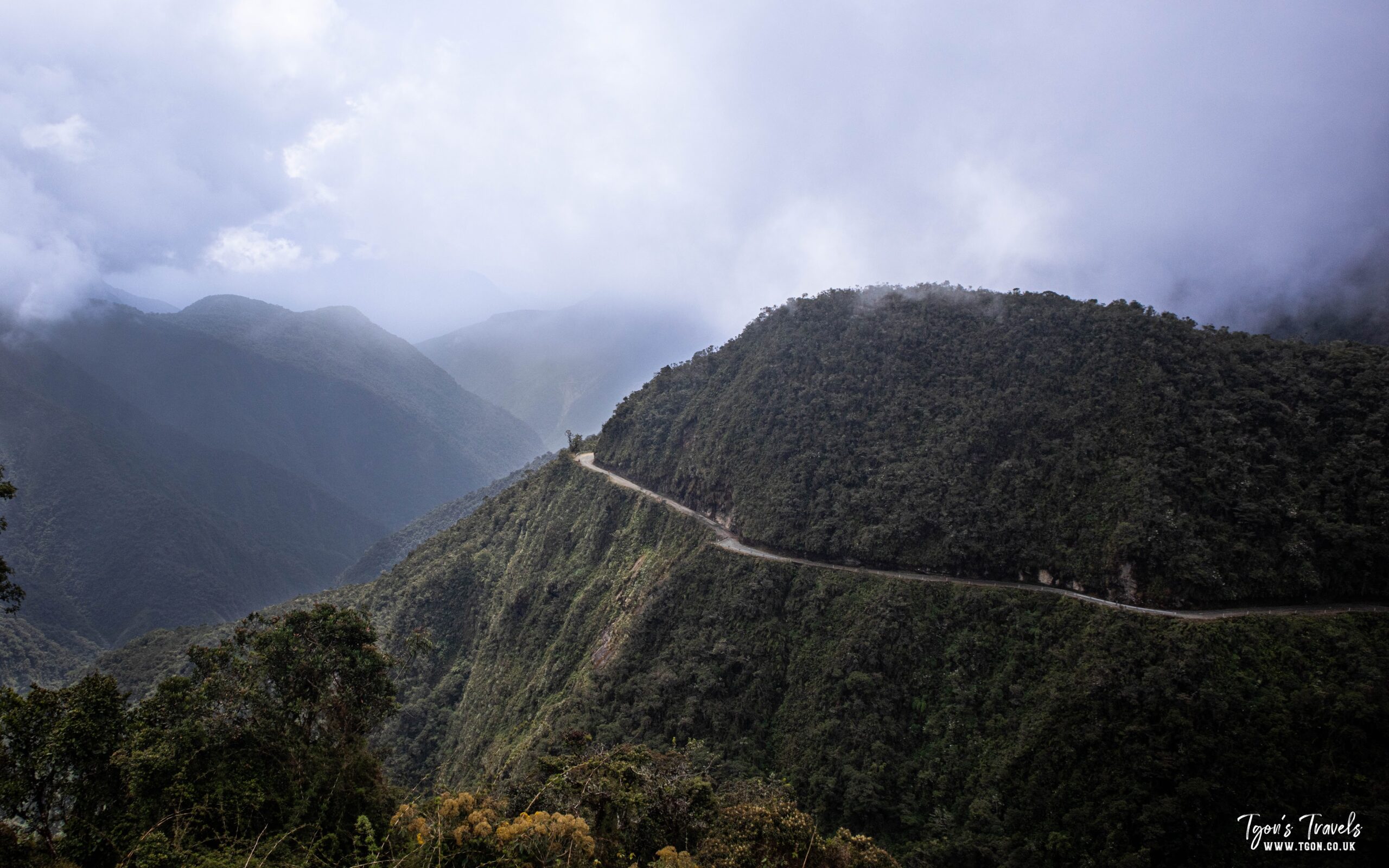
First view of the ‘Death Road’
When I got to the death road, it was still foggy. But I went down to a community that I had read was a small town at the top of the road. I hoped there would be a small hostel so I could take a shower and sleep in a real bed. But the ‘small town’ was actually around five houses in the mountains. I asked an old woman if there was a hostel, she said there wasn’t. But she said that I could sleep in the viewpoint if I had a tent. I couldn’t even see the viewpoint because of the fog. I could only see around a meter or so in front of my bike. So I used the mapping app to work my way to where the viewpoint was supposed to be and finally found the steps. I climbed up there, set up my tent and then laid on my mattress feeling exhausted. It took me around 30 minutes before I had the energy to cook some food. But then I ate and fell asleep.
The next morning I woke up and opened my tent to the best view that I have ever woken up to. Sleeping in a viewpoint, I should have expected it. But I didn’t even realise I was on the edge of the mountain looking down the valley. It almost made the previous days journey worth it. But from here I was at the end of week 14 and ready to continue down the Bolivian ‘Death Road’.
